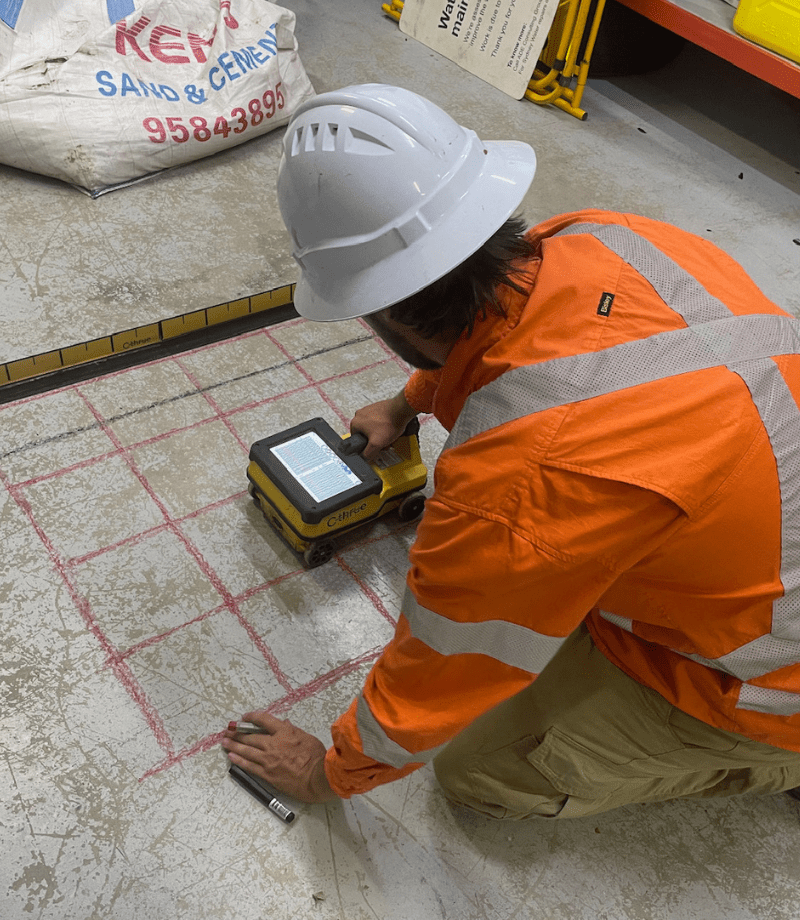RainierGPR Concrete Scanning: Ensuring Security and Performance in Building
Discovering the Secret Advantages of Concrete Scanning in Construction Projects
In the world of contemporary construction techniques, the use of concrete scanning technology has actually become an essential tool for making sure job performance and structural integrity. From improving precaution to precisely detecting energies concealed beneath the surface area, the benefits of concrete scanning are multifaceted. The ability to enhance project timelines and minimize costs while preserving existing frameworks is a testament to the worth this modern technology gives the construction sector. As we explore the nuanced benefits of concrete scanning, it ends up being evident that its influence extends much past surface-level analyses, using a glimpse into the intricate web of benefits waiting to be discovered.
Enhanced Precaution
Making use of innovative concrete scanning technology boosts precaution on building sites by providing accurate detection of prospective risks hidden under the surface area. This innovation enables construction groups to identify rebar, conduits, post-tension cable televisions, and other obstructions prior to excavation or exploration, significantly minimizing the risk of accidents. By pinpointing these components exactly, workers can stay clear of damaging essential structural components, therefore avoiding injuries, delays, and pricey repair work.
Additionally, concrete scanning plays a crucial role in making sure the honesty of existing structures throughout developments or improvements. By spotting weaknesses, spaces, or degeneration within concrete elements, designers can attend to these issues proactively, boosting the total safety and long life of the structure. This proactive technique not only reduces the threat of structural failures however additionally minimizes the possibility for crashes brought on by unpredicted architectural deficiencies.
Basically, the application of concrete scanning technology serves as a proactive precaution that safeguards both construction employees and the structural honesty of buildings, eventually contributing to the total success and performance of construction tasks. - RainierGPR Concrete Scanning
Accurate Detection of Utilities
Concrete scanning technology helps with specific recognition of underground energies, boosting building website safety and effectiveness. Accurate detection of utilities is important in construction jobs to avoid costly problems, project hold-ups, and most significantly, ensure the safety and security of workers and the general public. By using advanced scanning technologies such as ground-penetrating radar (GPR) and electro-magnetic induction, building teams can map out the place of buried pipelines, wires, and various other utilities with high levels of precision.

Time and Expense Effectiveness

Concrete scanning modern technology makes it possible for building and construction groups to precisely find rebar, post-tension cords, and other embedded objects within concrete frameworks. This specific info aids in avoiding expensive errors such as unintentional damages to essential components during boring, cutting, or coring activities. Furthermore, article source by recognizing prospective threats ahead of time, the requirement for expensive repairs or revamp as a result of damages can be lessened, leading to set you back financial savings for the job.
Furthermore, the ability to swiftly and properly find energies below the surface without triggering any kind of damage not only conserves time but likewise stops costly disruptions to existing facilities. In general, the moment and expense performance advantages of concrete scanning make it an invaluable tool for boosting construction task monitoring and implementation.
Preservation of Architectural Honesty
Preserving the architectural stability of buildings and facilities is critical in making certain lasting stability and security. Concrete scanning plays an essential role in this preservation process by permitting building and construction professionals to recognize potential hazards to the architectural honesty of a building or infrastructure prior to they intensify into major problems. With using sophisticated scanning modern technologies such as ground-penetrating radar (GPR) and electro-magnetic induction, building and construction teams can non-invasively assess the problem of concrete frameworks, locate rebar, post-tension wires, and various other ingrained elements, and identify any type of spaces, fractures, or degeneration within the concrete.
Improved Job Preparation
In order to make sure the successful execution of building and construction tasks, careful focus to information and complete preparation are essential parts that stem from an extensive understanding of the architectural problems determined through concrete her comment is here scanning. Inevitably, incorporating concrete scanning right into the project preparation phase boosts sychronisation among group participants, cultivates proactive analytic, and adds to the effective shipment of construction projects within budget plan and routine constraints.
Conclusion
In verdict, concrete scanning provides countless advantages in building and construction jobs. By improving precaution, properly detecting utilities, improving time and price performance, maintaining architectural stability, and helping in project planning, concrete scanning confirms to be a crucial tool for successful job implementation. Its capability to reduce dangers, increase effectiveness, and make sure job stability makes it a vital asset for building and construction specialists.
In the world of contemporary building and construction practices, the application of concrete scanning technology has emerged as a crucial tool for making certain job efficiency and structural honesty.Concrete scanning modern technology enables building and construction teams to precisely find rebar, post-tension cables, and various other ingrained objects within concrete structures. Via the use of innovative scanning modern technologies such as ground-penetrating radar (GPR) and electro-magnetic induction, construction teams can non-invasively analyze the condition of concrete frameworks, locate rebar, post-tension cables, and various other ingrained components, and identify any type of voids, splits, or degeneration within the concrete.
In order to guarantee the effective execution of construction jobs, meticulous attention to detail and thorough preparation are vital elements that stem from an extensive understanding of the architectural conditions identified through concrete scanning. Eventually, integrating concrete scanning right into the job planning stage boosts control amongst group participants, fosters proactive problem-solving, and contributes to the successful delivery of construction projects within spending plan and schedule constraints.